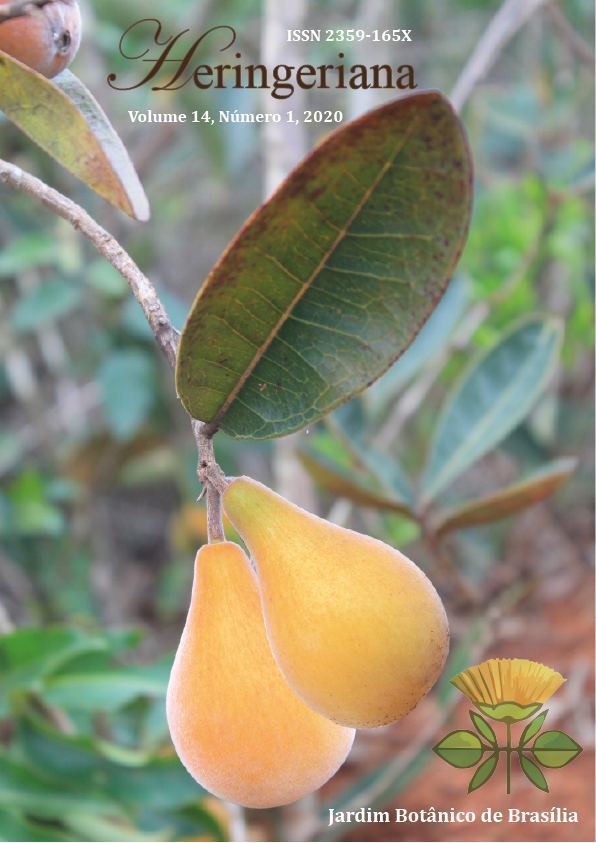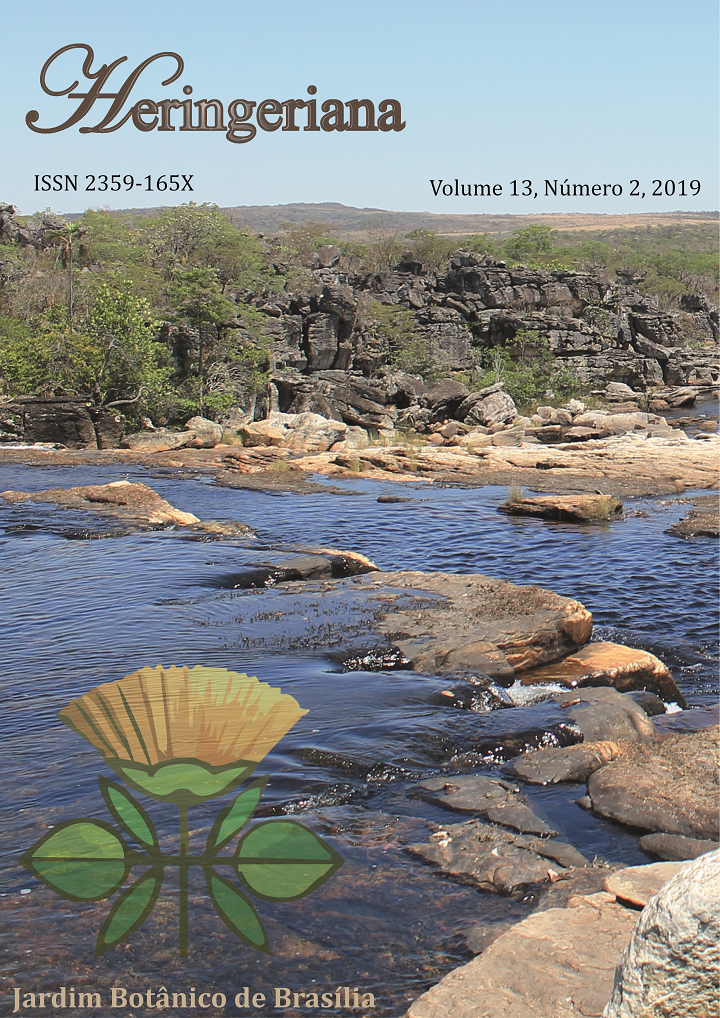Archives
-
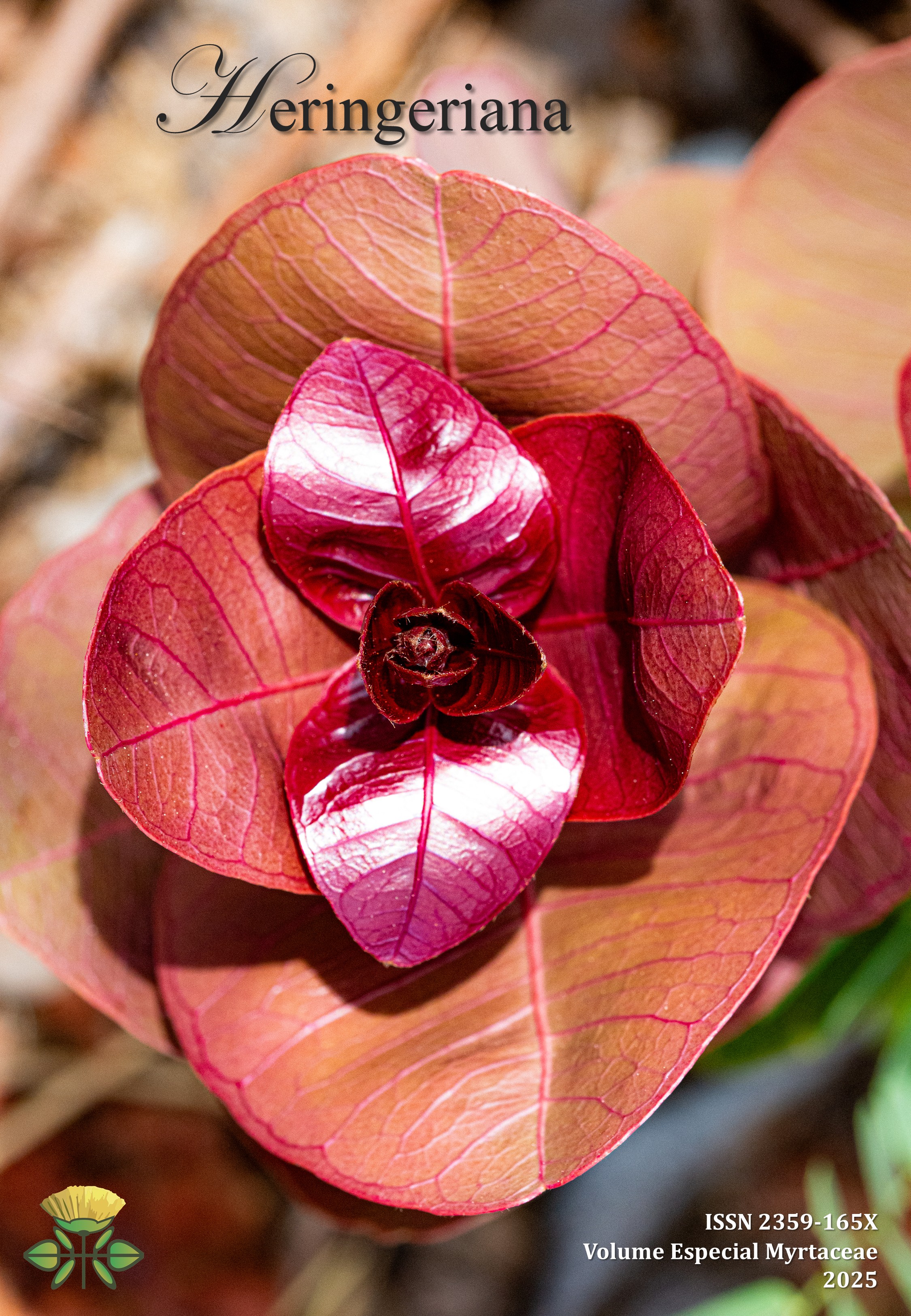
Special Issue Myrtaceae
2025Myrtaceae is one of the most important families of Brazilian flora, always presenting a high species richness in floristic and phytosociological studies. Due to its wide distribution in the Neotropics, and very similar morphological characters among species the task of identification can be challenging. With the very welcome increase in specialists working in the group, taxonomic confusion has been decreasing with the use of various techniques to better delimit subgroups. In-depth studies of the family also lead to records of non-traditional uses of species by traditional communities. The Myrtaceae Special Issue brings articles on floristics, taxonomy, botanical nomenclature, wood anatomy, ethnobotany, species delimitation and a beautiful work on the inflorescences in Myrteae.
Image: Estevão N.F. Souza. Presentation: Priscila O. Rosa
ISSN 2359-165X
-
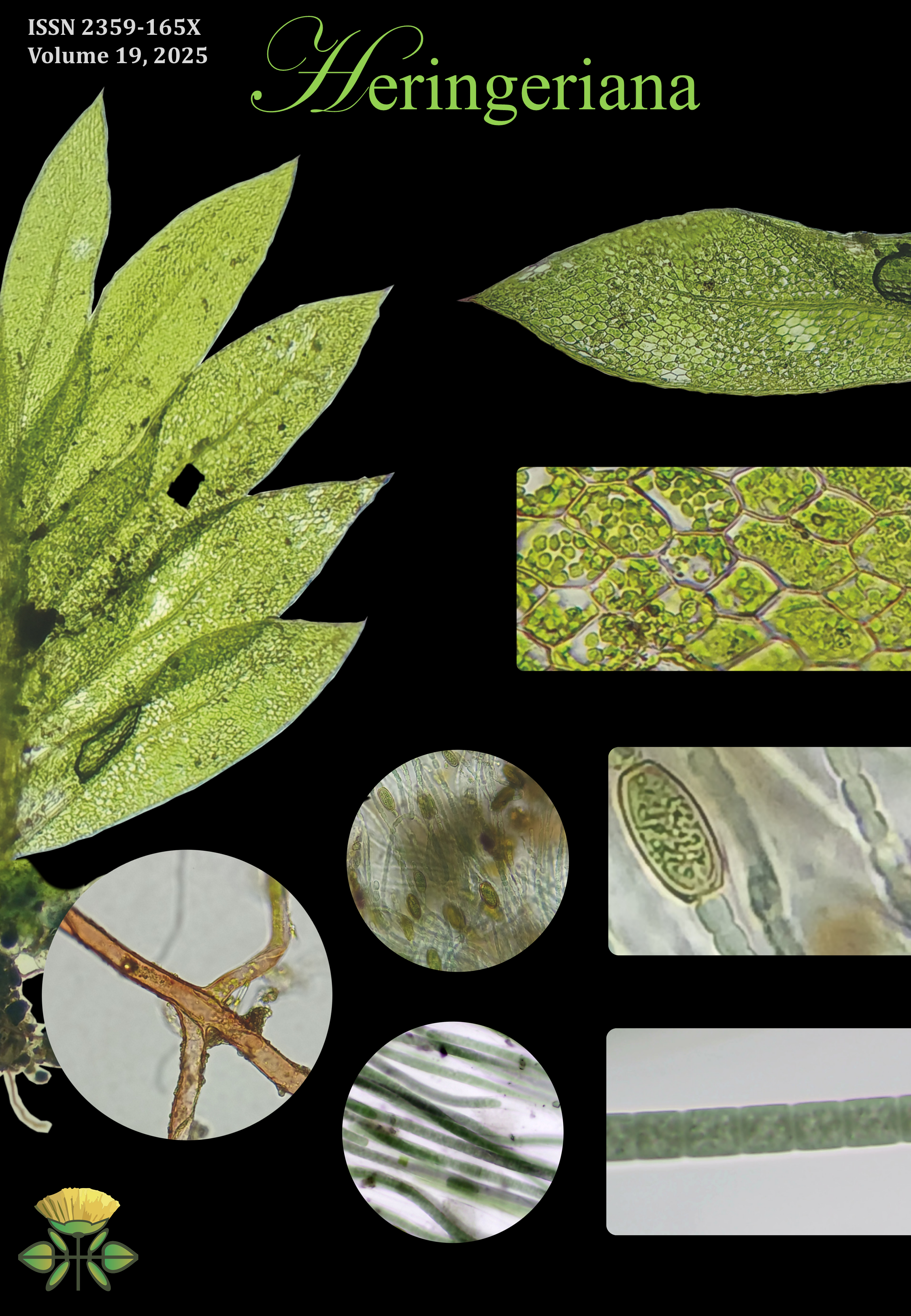
Heringeriana
Vol. 19 (2025)Mosses and cyanobacteria can coexist and form a symbiotic relationship, in which the cyanobacteria provide nutrients to the mosses, and the mosses offer physical support and protection to the cyanobacteria. On the cover of this issue, we present details of structures from mosses and cyanobacteria that associate with one another, like Fissidens palmatus (Fissidentaceae), Cylindrospermum muscicola (Nostocaceae), and Phormidium durum (Oscillatoriaceae), a new record for Brazil.
Images: Claudenir S. Caires. Cover design and text: Maria Rosa V. Zanatta.
ISSN 2359-165X
-
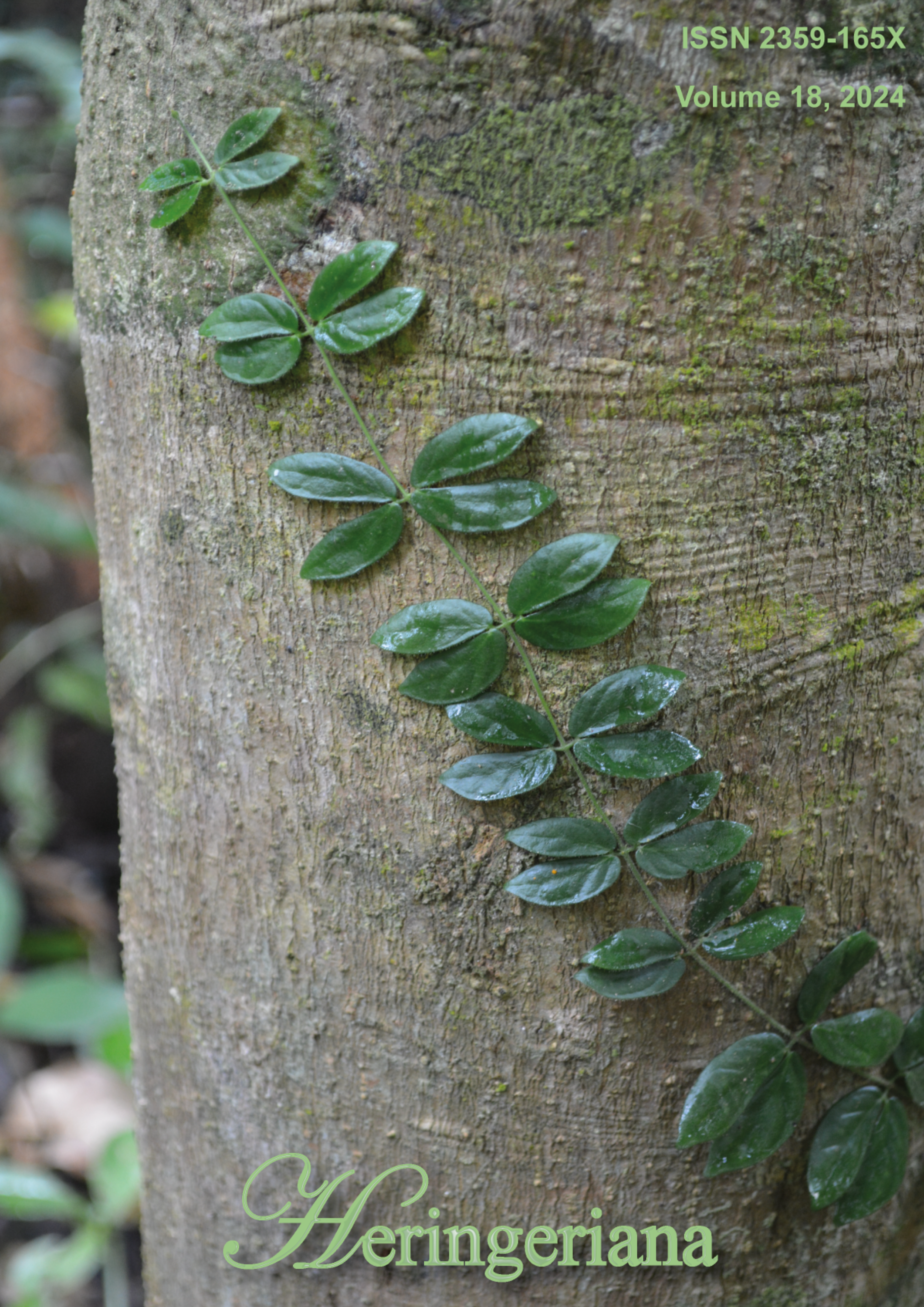
Heringeriana
Vol. 18 (2024)Juvenile leaves of Amphilophium bauhinioides (Bureau ex Baill.) L.G.Lohmann, a vine from the Bignoniaceae family endemic to Brazil. The search for suitable supports represents a fundamental aspect for the success of vines, which employ mechanisms and strategies of targeted foraging aimed at obtaining structural support. After reaching the apex of their hosts, some vines extend their growth in search of higher supports, while others benefit from a sequence of supports to reach the upper layers of the canopy. These climbing tactics highlight their significant contribution to the connectivity and organization of forest ecosystems. Photo, cover design, and text: M.R.V. Zanatta.
ISSN 2359-165X
-
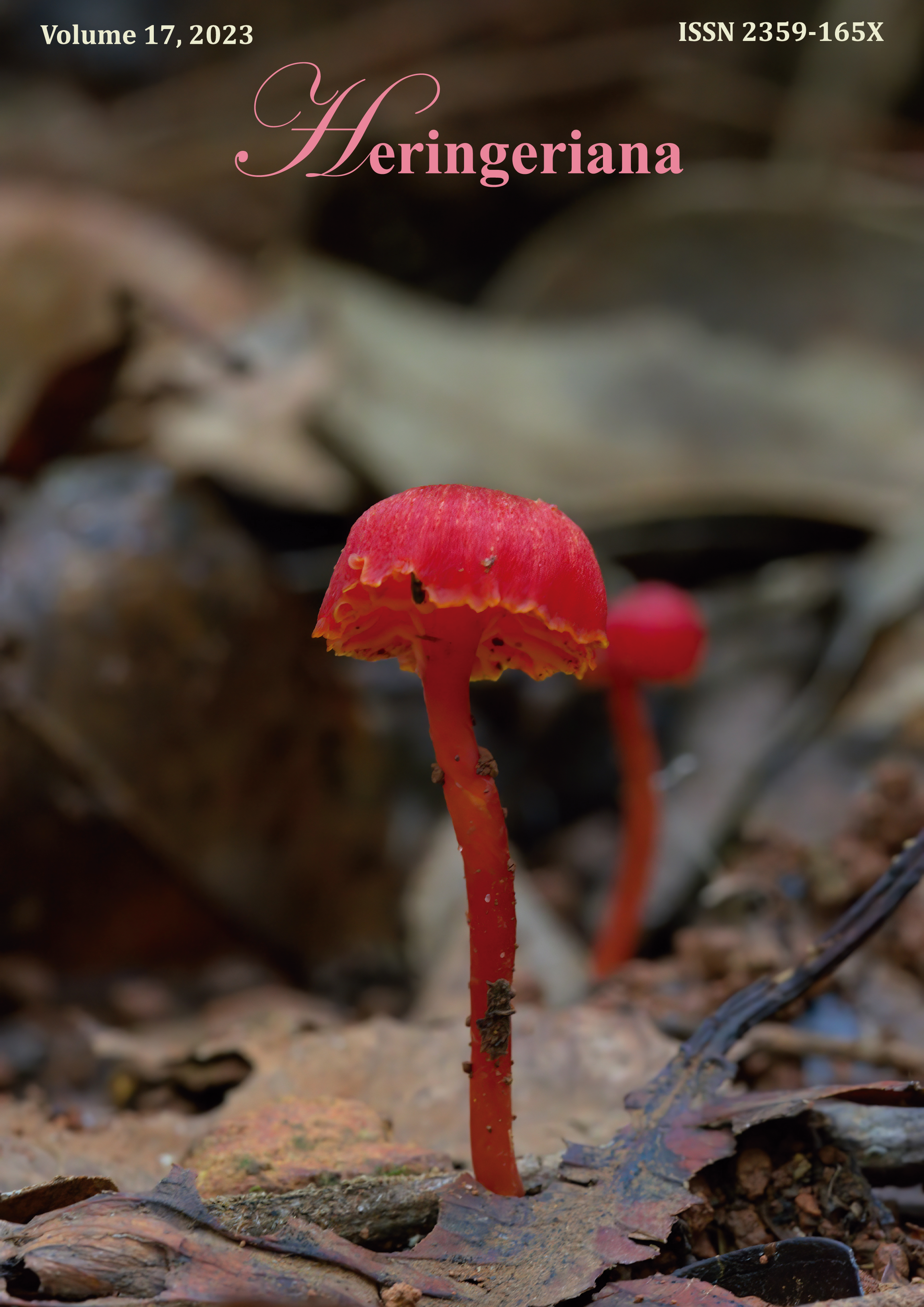
Heringeriana
Vol. 17 (2023)Hygrocybe miniata (Fr.) P. Kumm., known as vermilion waxcap, is a small cosmopolitan bright red or orange-red mushroom, found throughout the world. The red-yellow cap (or pileus) is initially convex, then flattens and becomes depressed with wavy edges; it is hygrophanous with small scales that can be seen with a magnifying glass. Photo: E.N.F. Souza. Cover edition and text: M.R.V. Zanatta.
-
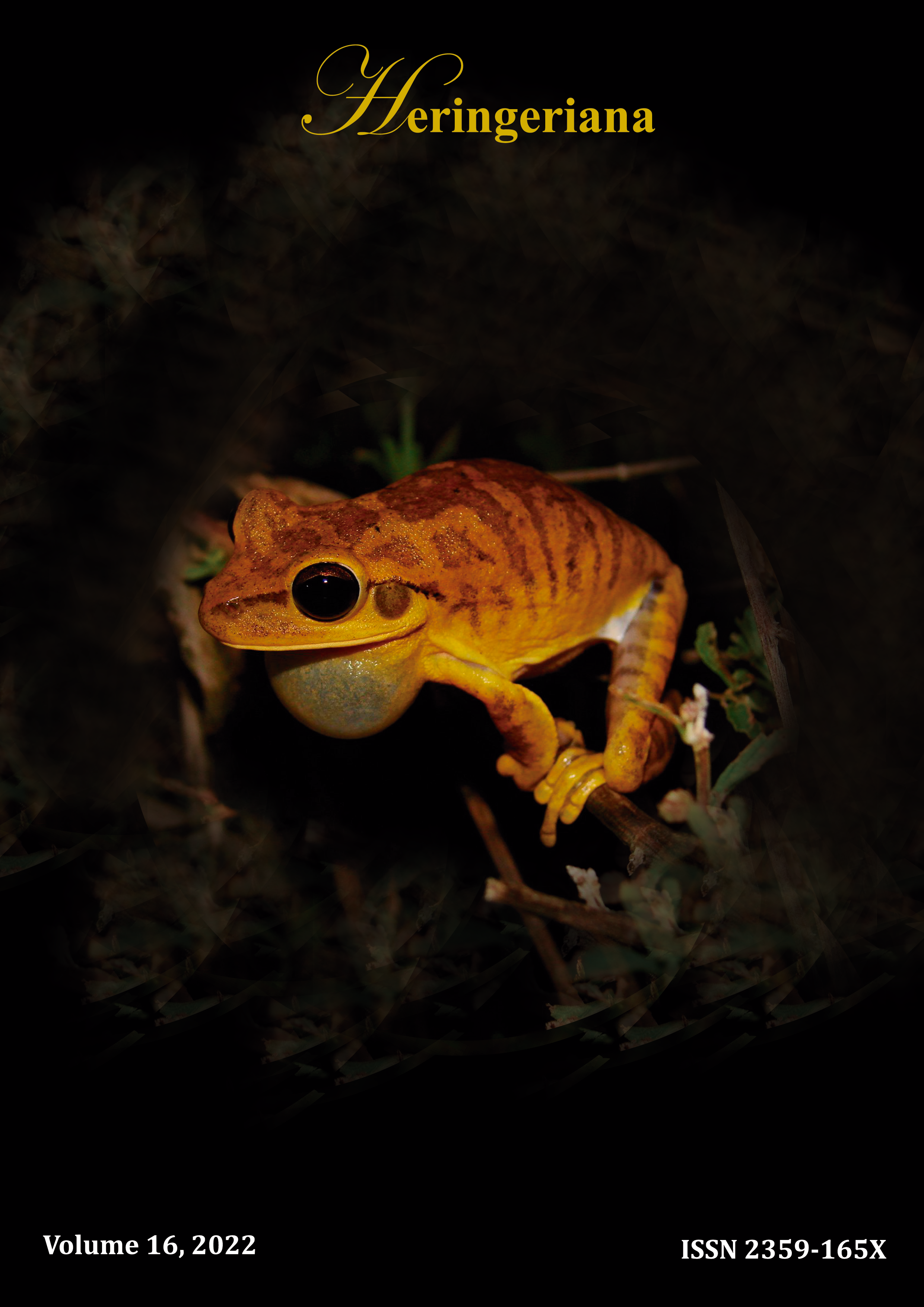
Heringeriana
Vol. 16 (2022)ISSN 2359-165X Cover: Chaco tree frog (Boana raniceps), a widely distributed hylid, found throughout the Neotropical region, in permanent or temporary water bodies associated with gallery forests and natural and anthropized open environments. It was recently found in the District Federal in constantly sampled localities, suggesting that this species has recently colonized the area. Photo: Reuber Brandão. Cover edition: M.R.V. Zanatta. -
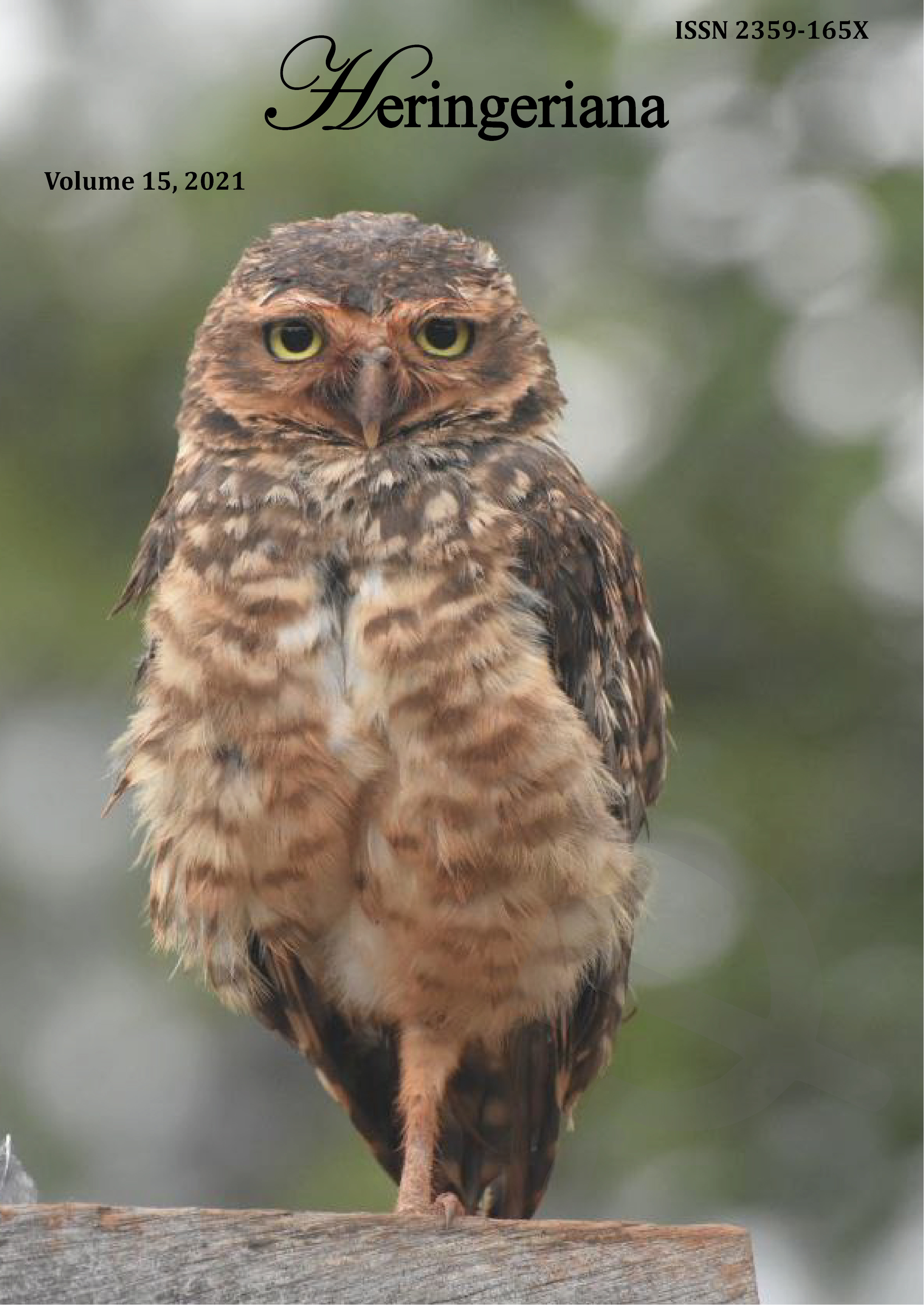
Heringeriana
Vol. 15 (2021)ISSN 2359-165X Cover: Photo of Burrowing Owl (Athene cunicularia), a small bird in the Strigidae family. In addition to privileged vision, the owl has excellent hearing, being able to locate its prey with only this sense. It is a small predator with a carnivorous-insectivorous habit, being considered a generalist because it consumes the most abundant prey according to the season, with a preference for rodents. It usually lives in fields, savannahs, pastures, sandbanks, plains, beaches, and airports. A terrestrial owl with diurnal and nocturnal habits, but especially active during twilight. Photo: E.N.F. Souza. Cover edit: M.R.V. Zanatta.
-
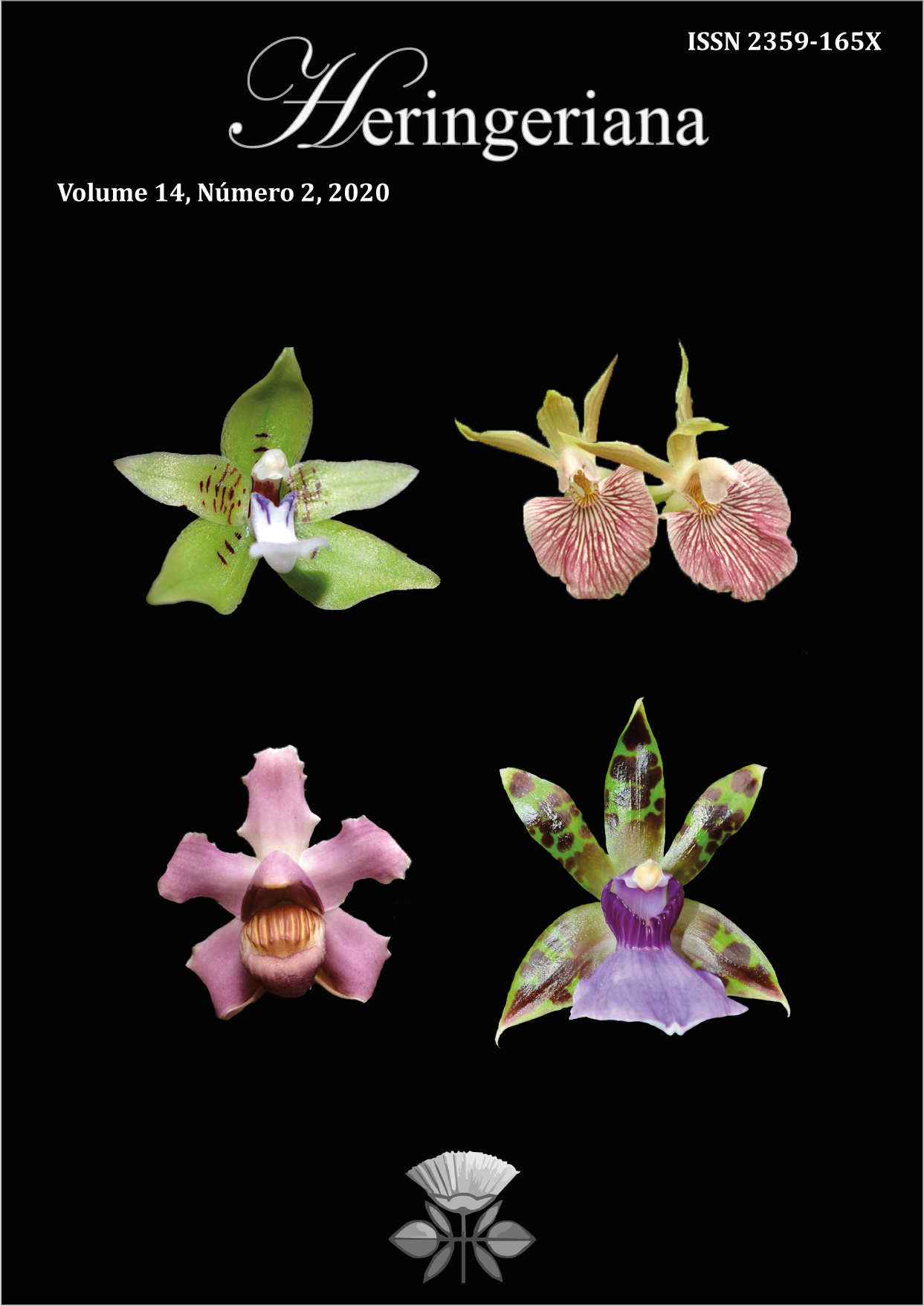
Heringeriana
Vol. 14 No. 2 (2020)ISSN 2359-165X
Capa: Fotos de orquídeas da subtribo Zygopetalinae adaptadas de um dos artigos desta edição (Meneguzzo 2020). Da esquerda para direita: Paradisanthus bahiensis subsp. micranthus (Foto do usuário ââ?¬Ë?Orch' na Wikimedia Commons), Zygosepalum labiosum subsp. lindeniae (Foto de K. Senghas), Pescatoria violacea f. violacea (Foto de K. Senghas), Zygopetalum maxillare f. maxillare (Foto de T.E.C. Meneguzzo). Edição da capa: M.R.V. Zanatta.
-
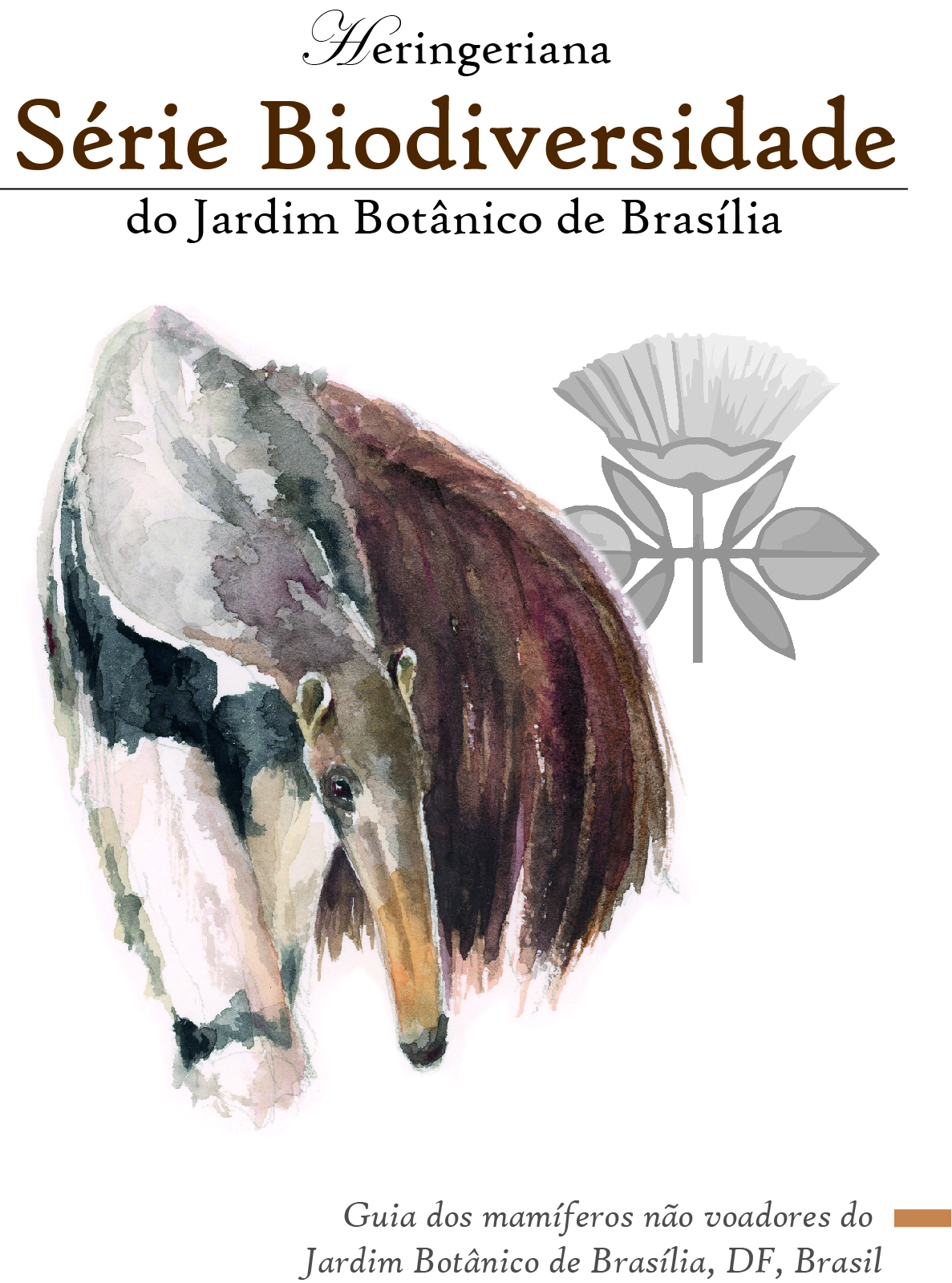
Série Biodiversidade do Jardim Botânico de Brasília
Vol. 1 (2020)This is the first volume of the "Biodiversity series of Jardim Botânico de Brasília", which aims to keep the information on the biodiversity of the Jardim Botânico de Brasília (JBB) and the Estação Ecológica do Jardim Botânico de Brasília (EEJBB) up to date. Each copy number will be published with its own ISBN number. Articles in the following thematic lines will be accepted: 1) Species identification guides; 2) Checklists; and 3) Ecological research. Manuscripts will be peer reviewed and submission will be of continuous flow.

